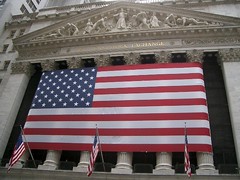Walmart Strike!
Walmart workers in several stores walked off the job in protest today. This is the first multi-store strike in the retailer’s 50-year history:
Today, for the first time in Walmart’s fifty-year history, workers at multiple stores are out on strike. Minutes ago, dozens of workers at Southern California stores launched a one-day work stoppage in protest of alleged retaliation against their attempts to organize. In a few hours, they’ll join supporters for a mass rally outside a Pico Rivera, CA store. This is the latest – and most dramatic – of the recent escalations in the decades-long struggle between organized labor and the largest private employer in the world.
“I’m excited, I’m nervous, I’m scared…” Pico Rivera Walmart employee Evelin Cruz told Salon yesterday about her decision to join today’s strike. “But I think the time has come, so they take notice that these associates are tired of all the issues in the stores, all the management retaliating against you.” Rivera, a department manager, said her store is chronically understaffed: “They expect the work to be done, without having the people to do the job.” [Salon]
As Josh Eidelson of Salon explains, this is a risky move because the workers do not yet belong to a union. Even so, federal labor law protects the right of non-union workers to walk off the job to protest the conditions of their employment. The workers can’t be fired for striking. What’s less clear is whether the company could bring in scabs to replace the if the strike continues.
Eidelson interviewed historian Nelson Lichtenstein, the author of a book on unions and Walmart, and a past winner of the Hillman Foundation’s Sol Stetin Award. Lichtenstein predicts that, if the strike gains momentum, the company will be constrained more by PR concerns than by the letter of the labor law.
Today’s action is organized by OUR Walmart, an employee organization supported by the United Food and Commercial Workers.
[Photo credit: A demonstration against Walmart’s labor practices taken earlier this month, peoplesworld, Creative Commons.]











